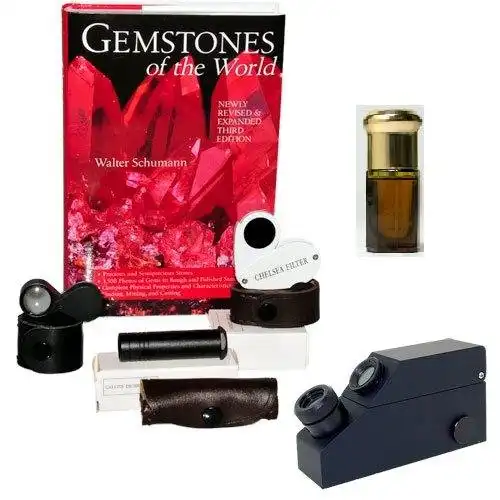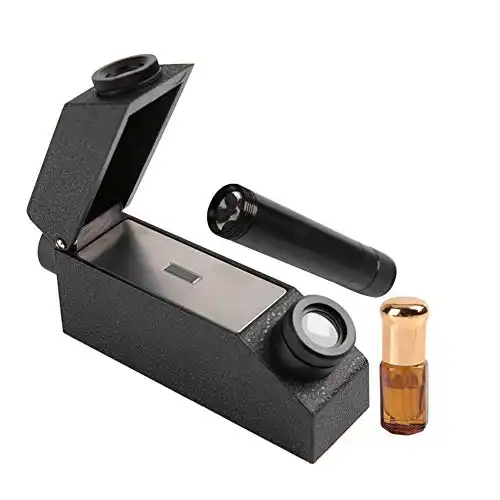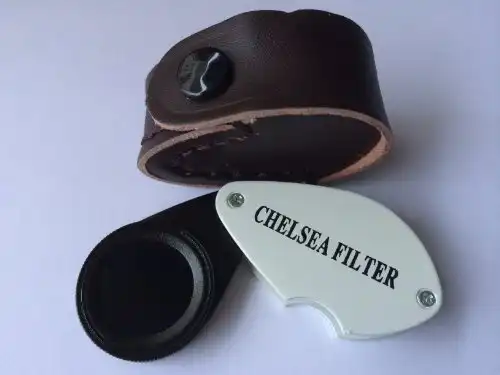Green tourmaline is a common gemstone for both jewelry and collecting, alongside the more famous emerald. Telling them apart is a serious challenge for a novice, but there are a few key indicators that you can use at home to be pretty certain.
So, let’s dig in and I’ll give you the information you need to make the distinction of emerald versus green tourmaline.
What is Green Tourmaline?
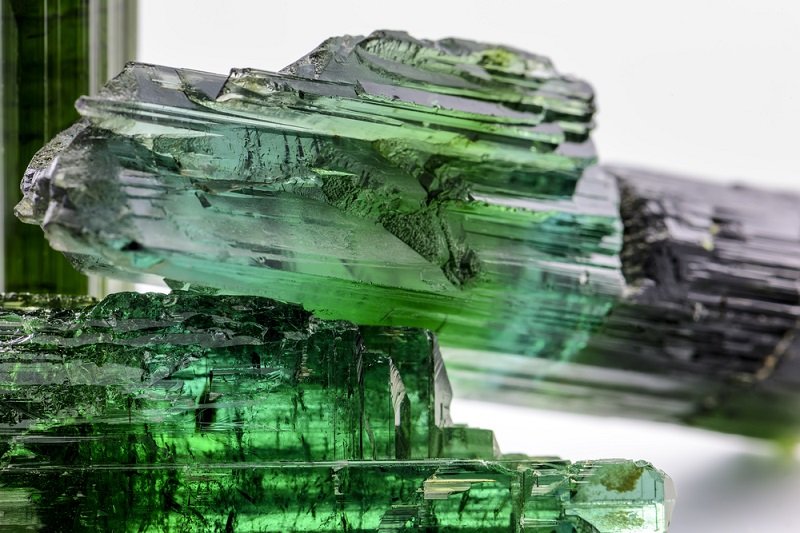
Green varieties of tourmaline are common in collections and jewelry. Both the crystalline and faceted forms of the stone are available, and both find their use in jewelry. The crystals are one of the most common pieces seen in high-end wire wrapping, for instance.
Tourmaline itself is a boron silicate mineral, with different contaminants leading to different colors. The most commonly seen form in the wild is schorl, which is an opaque black crystal.
Tourmaline has three subfamilies. Schorl, dravite, and elbaite. The latter is the one that we’re interested in for the purposes of this article, this sub-family contains a wide range of different colors.
Green tourmaline ranges from a pale olive reminiscent of peridot to a startling green that can be confused with other deep green gemstones including emerald. It depends on the impurities in the stone. Green tourmaline is sometimes referred to as verdelite.
Tourmaline is readily available but has a wide variance in cost depending on the grade, coloration, and origin. Green tourmaline is relatively common, with lots of gem-grade material being found each year.
The majority of green tourmaline can be distinguished from emerald with just sight, but deeper green varieties cause a lot of confusion.
For the purposes of this article, I’ll only be referring to chrome tourmaline from here on out. The other varieties of verdelite are easy to distinguish and are much more likely to be confused with peridot than emerald.
Related: (Real vs Fake Citrine) How To Tell Them Apart
What is Emerald?
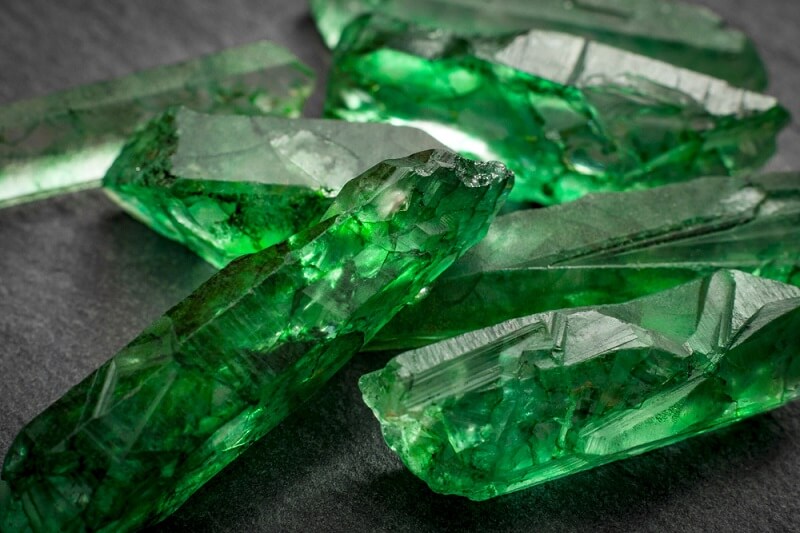
Emerald is the green form of beryl, and one of the classical gemstones. It’s distinguished by it’s color, hardness, and the jardin.
The jardin, French for “garden”, is the intricate network of inclusions that are present in almost every Emerald. The fascinating patterns are best viewed in a 10x or so loupe, where the magnification shows an incredible array of internal structures in most emeralds.
Even the most famous emeralds have inclusions that can be seen by the naked eye. The Rockefeller Emerald is my favorite example: a nearly clear emerald of the finest cut and highest grade… but you can still see inclusions in the stone.
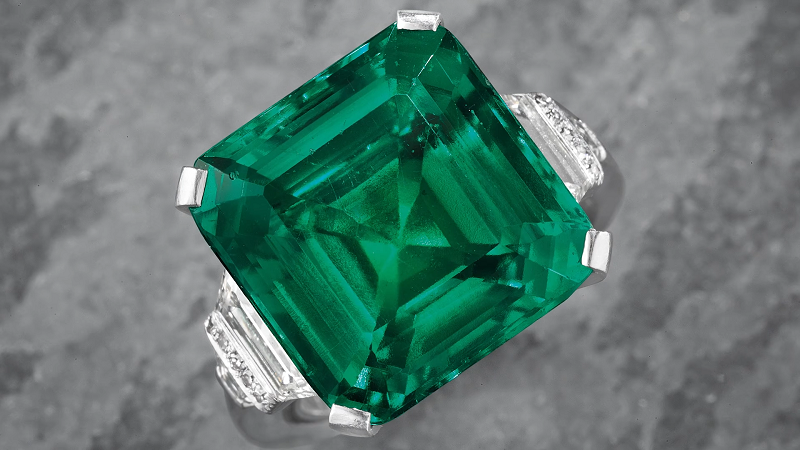
A clear emerald that doesn’t have a history is lab-created. I don’t like absolutes in collecting and teaching people to identify stones, but that’s just the truth in this case.
Emeralds are primarily known for their rich green color, in addition to their inclusions. The best description I’ve seen of the shade is “greener than green.” This coloration is due to the inclusion of chromium in the impurities of the stone.
Emerald is a green form of beryl, and natural stones are inevitably filled with inclusions.
How Are They Similar?
Both of these stones are close to the same shade of green. Chrome tourmaline is easy to confuse with chrome diopside and emerald. The metal simply produces the same shades in a variety of crystals.
For those new to minerals: chromium impurities turn things green. It’s just the way that it ends up working out in nature.
Both stones are readily available in both cut and natural forms. Both see their use in jewelry on a regular basis, not just finding their way onto collector’s shelves.
Tourmaline runs from 7-7.5 on the Moh’s scale, while emerald runs from 7.5-8. There’s a bit of overlap in the middle, which makes them hard to distinguish during normal scratch testing. Both will scratch most glass or agate without any trouble but few people are willing to test either in that manner.
How Are They Different?
Value is the main reason that you should be able to tell these stones apart. Emerald is, carat-for-carat, much more expensive than tourmaline when both are of the same grade.
And the truth is that lower grade tourmaline is most often sold as specimens to collectors, while even opaque emerald is usually cut to increase its value.
Keep in mind that top-grade chrome tourmaline is competitive with emerald for pricing. It’s a bit cheaper and preferred by those who don’t have a fascination with the jardin in emeralds but the difference is less than 20% most of the time.
The two minerals have different chemical makeup. While tourmaline is a boron silicate mineral, emerald is a beryllium aluminum cyclosilicate. There’s a big chemical difference between these two stones, which makes a change in how light filters through them.
While both stones have inclusions, a 100% eye-clean tourmaline isn’t a rarity. A sizable stone with no visible inclusions isn’t an emerald in most cases.
But the end result is that they’re completely different minerals.
How Do I Tell Green Tourmaline and Emerald Apart?
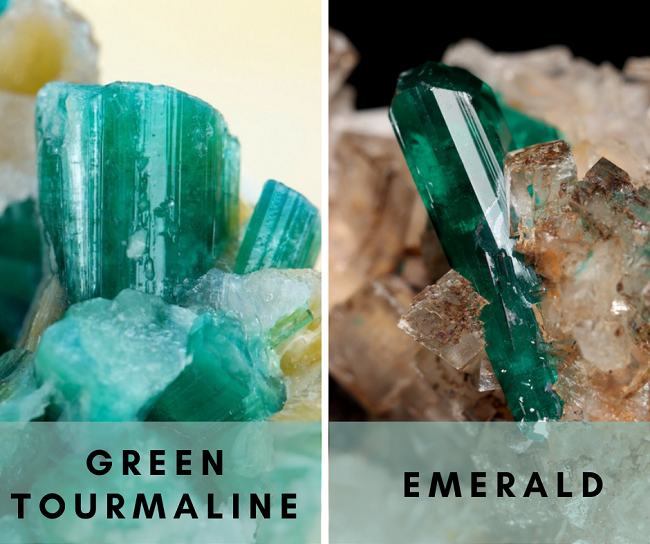
If you’re doing this to know the value of a gem or piece of jewelry then take them to a jeweler or gemologist. These stones can be very hard to distinguish from each other and to know 100% may require serious inspection.
As much as I have faith in the ability of my fellow rockhounds… most of us aren’t gemologists and it’s one of the harder fields to understand. The main problem that arises for doing this identification at home is the fact that both stones are colored with chromium.
Related: Real vs Fake Moldavite: How Can You Tell the Difference?
Tourmaline and Emerald Identification
You’ve got a few options to help your identification at home, however, without having to buy prohibitively expensive equipment. If you’re planning on making a habit out of trying to identify gemstones, I recommend a gemologist starter kit.
Microscopes
Microscopes are the easiest for an experienced person to use. While they have similar (but not identical) crystals, a microscope will let you look inside the stone.
Emeralds vary by locality, but will inevitably have inclusions when you’re magnifying them. Tourmaline often looks “wet” on the interior and has different sorts of inclusions including tubes. This is a subjective test and mostly based on the viewer’s experience. Checking a couple of known samples will help a lot when it comes time to look at unidentified stones.
Refractometers
A refractometer measures the refractive index (RI) of gemstones. Both emerald and tourmaline are doubly refractive, giving them two readings when the time comes. They’ll read as follows:
- Tourmaline – 1.616-1.634 and 1.630-1.652
- Emerald – 1.560-1.565 and 1.587-1.593
That may be the best way to test at home, but a good refractometer is going to run you a few hundred dollars at best.
Chelsea Filter
The cheapest option is to use a Chelsea filter. Due to the filter’s nature, emeralds will appear red while the majority of green tourmaline will appear green underneath the filter.
Unfortunately, the closest match to Emerald in the tourmaline family is chrome tourmaline, which will appear reddish under the filter. Some emeralds with vanadium in addition to chromium may also appear green.
Chelsea filters can’t tell you if the stone is fake. It’s a very rough test and primarily used on gemstone lots when separating them after purchase.
Dichloroscope
The final test you can perform without spending thousands is to test the pleochroism of the stone. Using a dichloroscope you’ll be able to split the colors of the stone. These two colors are a good tell, and it’s easier to distinguish chrome tourmaline from emerald here than with a Chelsea filter.
Emeralds will appear with a blue-green and a yellow-green color. On the other hand, chrome tourmaline will appear with a deep yellow-green and dark green.
How To Use A Dichroscope, Chelsea Filter and Spectroscope
Final Thoughts
If you’re willing to go through the effort to learn the basics of gemology you can tell these stones apart at home. If you’re trying to determine what the stone is worth, however, then you’ll still need to take it to a jeweler or appraiser.
Without a certificate, your findings aren’t worth much at the time of sale. Still, it’s possible to distinguish them at home for the purposes of your collection!
The bottom line is that green tourmaline and emerald are very similar but have some tell-tale differences. It’s just unfortunate that no one can be expected to take your word on it without an actual lab test.
- Online rock and mineral club for collectors of all levels!
- Find community with like-minded rock and mineral enthusiasts.
- Monthly Giveaways!
- Free Access to Entire Digital Library of Products (current and future products)*

